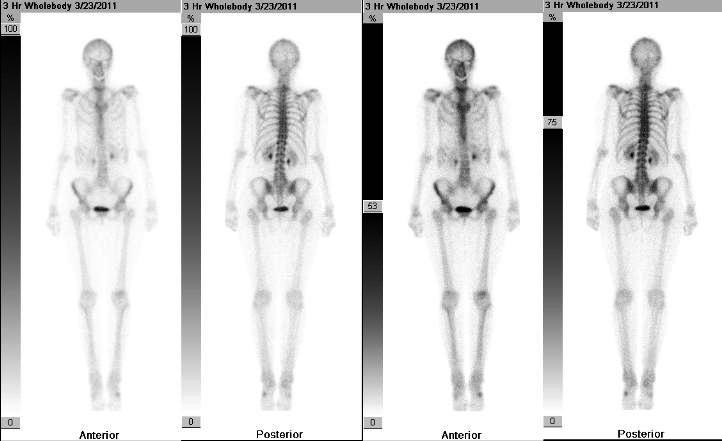Bone Scans
Bone Scans
Bone scan is a test utilized by Physicians to detect abnormalities in the bones. As you know, the spine consists of bone and tissue. If an x-ray does not demonstrate a fracture or cause of pain, a bone scan is a general test that can isolate abnormalities of bony areas.
The image below is the typical appearance of a bone scan. The test outlines the skeleton, and areas of intense blood supply will appear darker. In the image below, it is essentially normal. There is more uptake in certain bones. Area’s of intense uptake may suggest a problem. As the dye is excreted through the urine, the kidneys and the bladder will also show increased uptake of the dye. Those findings are typically normal.
NORMAL WHOLE BODY BONE SCAN
For spine patients, it can be helpful in identifying subtle fractures, such as compression fractures, stress fractures and spondylolysis.
In patients with a history of cancer, it is often used as a tool to make sure there is no spread of cancer to the skelaton.
Bone scans however, are not very specific and often activities detected on bone scan are non-painful and non-specific arthritic changes.
There is potential radiation risks of bone scans and these factors must be considered in the utilization of the test.
Please do not confuse bone scans (which is the injection of technetium), with DEXA (bone density scan).
Last modified: October 22, 2019










